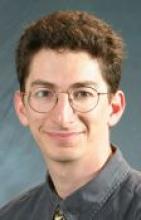Dr. Dan Reichart has been announced as the keynote speaker for the SARA Annual Conference to be held July 14 to 17 at the National Radio Astronomy Observatory in Green Bank, WV.
Dr. Dan Reichart earned B.S. degrees in Astronomy & Astrophysics, Physics, and Mathematics and a minor in History from the Pennsylvania State University in 1996, and M.S. and Ph.D. degrees in Astronomy & Astrophysics from the University of Chicago in 1998 and 2000. Dan then won a Hubble Postdoctoral Fellowship, which he took to the California Institute of Technology in Pasadena. Since 2002, he has been an Assistant Professor of Physics & Astronomy at the University of North Carolina at Chapel Hill.
Dan’s dissertation research on distant, cosmic explosions called gamma-ray bursts was ranked by Science Magazine as one of the top ten discoveries in science in 1999, and in 2003 earned him the Robert J. Trumpler Award, for top astrophysics dissertation research in North America.
In 2005, he and his students at the University of North Carolina discovered the most distant explosion in the universe yet known, a gamma-ray burst that occurred 12.8 billion years ago, when the universe was only 6% its current age. Their findings were published in Nature Magazine.
Dan and his students are currently building six robotic telescopes, or telescopes that control themselves, on a remote mountaintop in the Chilean Andes, and are helping others to build similar telescopes across the United States. When not observing gamma-ray bursts, the telescopes are available to students and educators of all levels from their home and school computers.
Dan is also the recipient of the Carl Sagan Award for Excellence in Teaching, the Nathan Sugarman Award for Excellence in Research, the Donn MacMinn Award for Service beyond the Walls of the University, and Ernest F. Fullam Award of Dudley Observatory.
As of June 2006, he has published 60 scientific papers, 114 observing reports, and has written popular articles for Sky & Telescope and Mercury magazines. He has raised over two million dollars for his research, and regularly reviews grant proposals for the National Science Foundation and NASA.

